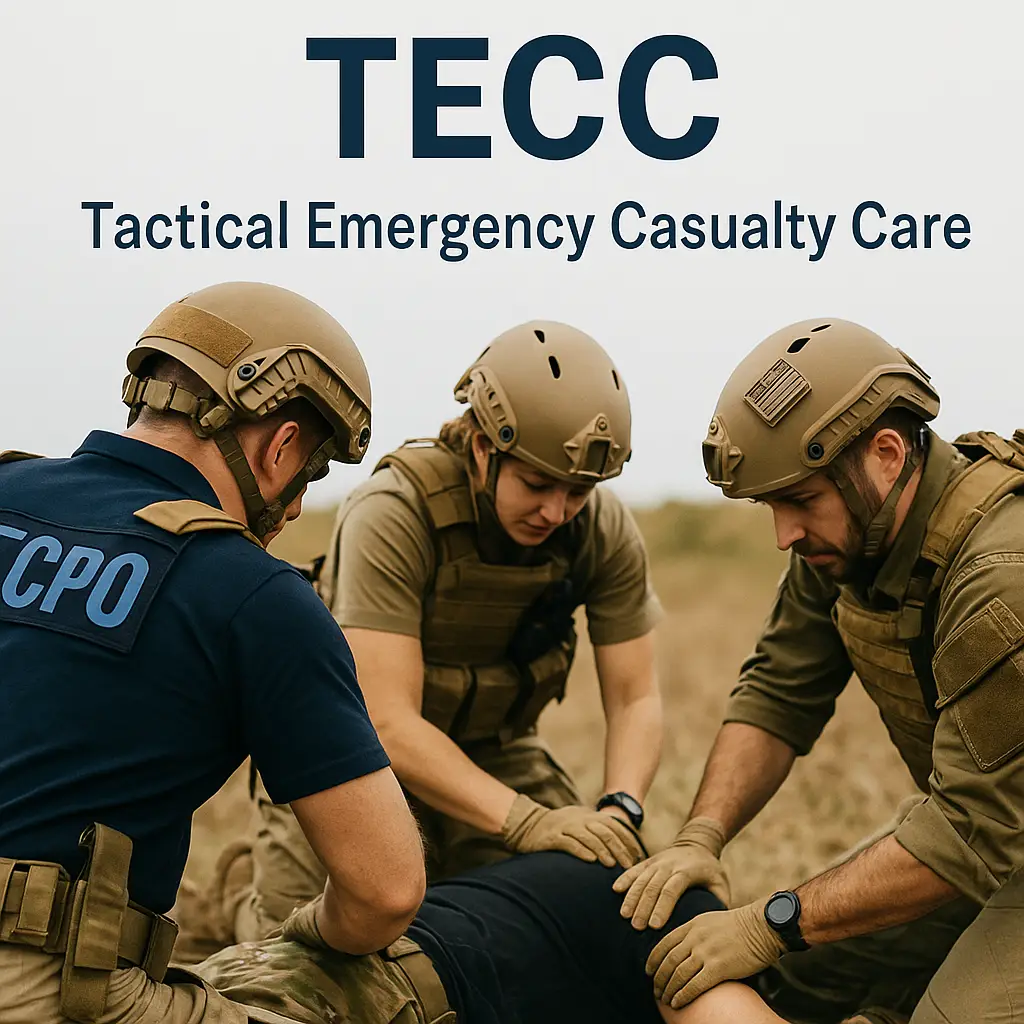T.E.C.C. - TACTICAL EMERGENCY CASUALTY CARE

DESCRIPTION OF TRAINING
TECC level 3 is a CIVILO-Operational version based on the TCCC guidelines.
This training will enable you to acquire the gestures and best practices needed to stabilise an injured person (polytrauma) according to clear, hierarchical guidelines and precise, approved drills. This training course will provide a complete understanding of the various procedures involved.
Most of the training is practical, backed up by theoretical knowledge of anatomy, physiology and traumatology. This course is essential in both civilian and operational environments, whether hostile or not.
Certifié par Highfield

UNIT 1: MEDICAL INTERVENTION
- Care under fire: When military action for civil security takes precedence over care for the wounded.
- How to adapt your approach to casualty care to the threat
UNIT 2: INJURIES
- Musculoskeletal injuries (fractures of arms, legs, pelvis, feet, skull)
- Thoracic injuries (chest seal with valve, decompression needle, thoracic asymmetry)
- Spinal cord injury (spinal cord injury and trauma, use of FERNO
UNIT 3: TRAUMATISM MANAGEMENT
- Chest trauma :
a)Identify and treat life-threatening chest trauma immediately.
b)Recognise chest injuries that require urgent surgical intervention.
c)Understand that some injuries need to be managed by intubation, ventilation and intensive care.
d) Assess, identify and treat life-threatening chest injuries.
- Abdominal trauma:
a)Understand the priorities for assessment and management of patients with blunt or penetrating abdominal trauma.
b)Recognise the indications for urgent surgery in unstable patients.
c)Understand the role of imaging and investigations in the diagnosis and follow-up of abdominal trauma victims.
- Mechanisms and epidemiology of trauma:
a)The main mechanisms and types of injury in the military population.
.b) The reasons for adopting delays in trauma care and the controversy surrounding delays.
- Head injuries:
a)Identifying and managing life-threatening head injuries.
b)Recognise head injuries that require urgent surgical intervention or intensive care.
c) Understand the management of head injured patients at each level of care.
UNIT 4: INJURY MANAGEMENT
- Wound management
- Head injuries (head trauma, CAPNO propaq sensor)
- Abdominal pain
- The important differences between limb and pelvic injuries in the military environment compared to the civilian environment.
- How to assess and treat limb and pelvic injuries
UNIT 5: DECOMPRESSION SPLINT
- Decompression splint for legs and arms
UNIT 6: CARDIOVASCULAR CARE
- Emergency cardiovascular care
- Understanding cardiovascular pharmacology, preparing and administering essential cardiovascular drugs
- Cardiac respiratory
- Anaphylaxis
- Airway
- Cardiac arrest rhythms (tachycardias and bradycardias)
- Acute coronary syndrome
- Hot and cold emergency
UNITÉ 7 : ENVENIMATION ET KED
- Animal envenomation
- KED
UNIT 8 : FIELD RESUSCITATION RÉANIMATION SUR LE TERRAIN
- Understand the preparation of a Role 1 facility to receive a seriously injured casualty
- Understand the process of assessing and treating seriously injured casualties in Role 1
- Tactical field care: How to assess and treat a casualty in a semi-permissive environment with limited resources
- Appreciate the critical decision that must be made when managing casualties in Role 1
UNIT 9 : BURNS
- Understand the epidemiology and pathophysiology of a burn
- Understand how to assess the depth of a burn
- Understand how to assess the size of a burn
- Understand treatment priorities when dealing with a burn casualty.
- Understand the specific characteristics of thermal, electrical and chemical burns
UNIT 10: TRIAGE
- Understand the definition and purpose of triage
- Know the different triage priorities
- Understand the importance of triage labelling
- Understand the systems used to carry out triage
Practical information
- Duration: 5-day modules
- Location France, Belgium, Egypt, Switzerland, Italy...
- Language French, English
- Certification : Highfield
- Prerequisites : Level 2 or equivalent
- Additional information: Accommodation included depending on location
All our group training courses can be adapted on request / Min 5 people

